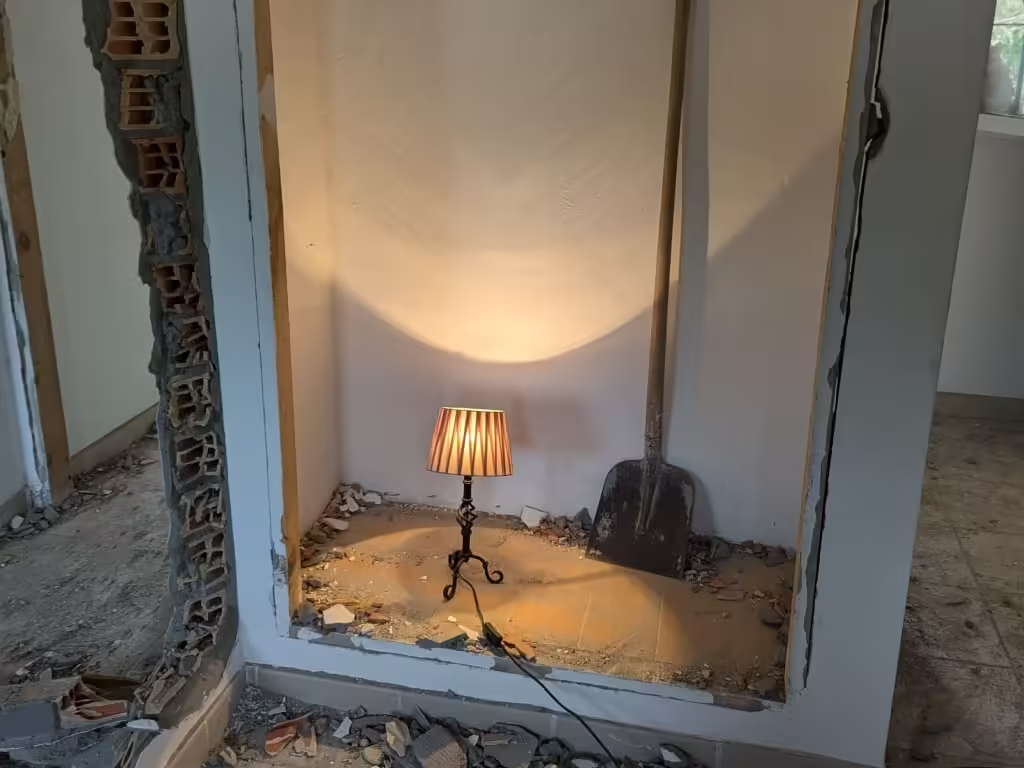The Hidden Costs of Purchasing Former Rental Properties
In the current property landscape, former rental properties are attracting significant buyer interest due to their prime locations and competitive pricing. This trend is partly driven by recent legislative changes that have made rental operations more challenging, prompting landlords to sell their assets. However, our experience in property evaluations and renovations has revealed a consistent pattern of challenges associated with these properties.
When converting ex-rental units into desirable primary or secondary residences that align with contemporary standards for home comforts, buyers often encounter unforeseen issues that can significantly increase renovation costs. These properties frequently require substantial upgrades to meet modern expectations, as they may have been maintained to minimum standards during their rental tenure.
The Pitfalls of Cost-Cutting Construction
Many properties built for the rental market focus on minimizing expenses rather than maximizing durability and comfort. Since these properties aren’t designed for year-round occupancy, corners are often cut in construction and materials. This cost-cutting strategy can result in various hidden issues that may not be readily noticeable to casual observers or short-term guests. The emphasis on immediate savings over long-term quality can lead to a range of potential problems that might only become apparent with extended use or closer inspection.
Structural Concerns
Foundations and Wall Thickness: The cornerstone of any building, these crucial elements are often compromised in rental properties. Inadequate foundations and thin walls can lead to structural instability and poor insulation.
Flooring and Tiling: Subpar floor slab thickness and flooring installation techniques, such as omitting reinforcing mesh or using cheap adhesives, can result in cracking, lifting, and premature wear.
Plasterboard: Masking moisture issues with plasterboard is a common practice. While this method can be successful when executed correctly using appropriate materials, it’s often implemented improperly. The frequent result is mould growth behind the plasterboard, which can lead to serious health concerns. Our company has encountered numerous instances where we’ve been hired by clients on a budget to install normal plasterboard in rental properties as a quick and inexpensive solution to moisture problems despite us expressing concerns. However, this approach often serves as a temporary fix rather than addressing the underlying problem.
Comfort and Efficiency Issues
Insulation and Climate Control: Many rental properties lack proper insulation and efficient heating and cooling systems. This oversight not only affects tenant comfort but also leads to higher energy costs and potential mould problems due to thermal bridging.
Swimming Pool Construction: Cheap pool construction is a common issue, often resulting in leaks and tile problems that can be costly to repair.
The Maintenance Dilemma
Rental properties frequently suffer from a cycle of quick-fix solutions and the use of substandard materials in maintenance efforts.
Plastic Paint
The widespread use of plastic paint on interior and exterior surfaces is a prime example of short-term cost-cutting that can lead to long-term issues. While these paints are initially cost-effective, they present significant health and restoration challenges.
Health Concerns
Plastic paints (and often cheaper resin-based cork-based paints the new in thing) can off-gas volatile organic compounds (VOCs) long after application. This off-gassing process can potentially cause respiratory issues for tenants, with children and individuals with sensitivities being particularly vulnerable.
The Costly Removal Process
Removing plastic paint is often a complex and expensive process, particularly due to its impact on the underlying substrates (resin-based cork paints are even more difficult to remove):
- Substrate Degradation: Plastic paints can block the capillary action in porous surfaces like plaster or wood. This blockage can lead to the powdering or degradation of the substrate over time.
- Multiple Layers: Rental properties often have multiple layers of plastic paint applied over the years, making removal more challenging and time-consuming.
- Specialized Techniques: Removing plastic paint without damaging the substrate requires specialized techniques and often professional expertise.
- Environmental Considerations: The removal process must be conducted carefully to prevent the spread of potentially harmful particles.
Cost Implications
The process of eliminating plastic paint from buildings can be a costly endeavour for property owners, frequently necessitating the complete removal of render due to underlying substrate deterioration. In cases where insulating cork-based renders are to be applied, the expenses associated with stripping away plastic paint and repairing damaged substrates often surpass the costs of the new render application itself.
The Renovation Conundrum
Our experience highlights that renovations are often carried out without proper permissions or adherence to construction codes. This practice can lead to:
– Substandard quality work
– Safety concerns
– Legal complications
– Higher restoration costs in the long run
The Importance of Due Diligence
When considering a property purchase, especially one with a rental history, thorough due diligence is crucial. Here are some key points to consider:
- Professional Property Survey: Always invest in a comprehensive property survey conducted by experienced professionals.
- Documentation Check: Look for documented, approved renovations carried out by qualified professionals.
- Legal Status: Ensure the property is fully legal and compliant with local regulations. If a property is not fully legal (this includes AFO), it is highly unlikely that works have been approved and checked.
- Renovation History: Be wary of properties without a clear record of past restorations.
- Insulation certificate: More and more properties that should have an ‘E’ or less energy rating are being fraudulently given higher rating certifications due to corrupt individuals and local councils struggling to understand the regulations. This manipulation not only misleads homebuyers but also breaks the law, putting buyers at risk of high energy bills and lower property values. Always double-check insulation certificates to avoid being caught in this scam.
- DIY Caution: Even well-intentioned DIY renovations can lead to issues down the line.
The Challenge of Hidden Issues
It’s important to note that even with a thorough inspection, some issues may remain hidden. Years of quick fixes and multiple layers of paint can conceal underlying problems. As a general rule, if a property lacks proper documentation or has a history of unpermitted work, it’s wise to prepare for the worst-case scenario.
A Word of Caution
This information is not meant to discourage potential investors or homebuyers. Instead, it serves as a call for increased awareness and diligence in the property acquisition process. By understanding these common issues, buyers can make more informed decisions and potentially avoid costly surprises in the future.
Conclusion
Investing in a previously rented property can offer significant financial rewards, but it’s crucial to be aware of potential hidden expenses and obstacles. Success in this venture hinges on:
- Conducting comprehensive research
- Obtaining professional property evaluations
- Realistically assessing renovation requirements
By adopting a discerning approach and investing in high-quality assessments, investors can more adeptly manoeuvre through the intricacies of real estate transactions.
It’s essential to recognize that a property’s true worth extends far beyond its initial cost. When evaluating any real estate opportunity, consider:
– Long-term maintenance expenses
– Potential restoration costs
– Necessary upgrades and improvements
Armed with expert guidance and a strategic mindset, you can make well-informed decisions that will prove beneficial for years to come. Remember, thorough due diligence is the cornerstone of successful property investment.

